The relatively flat Limerick Greenway, built along the former Limerick to Tralee railway line, weaves for 40km through west Limerick’s agricultural landscape. Two years ago Limerick City and County Council spent €10 million on restoration, surfacing and signage, and have since improved it with various bridges to facilitate farmer crossings.
With more than one million visits so far, the greenway has injected tourism into towns such as Rathkeale and Newcastle West, hitherto overlooked on the average tourist’s to-do list. Before embarking on the cycle myself, I’m staying overnight at Leens Hotel in Abbeyfeale, the last town before Co Kerry. It’s a homely place with impressive pub grub, so I sit down beside three men hoping to strike up a conversation. Perhaps they’ll reveal fascinating insights about the local area? Maybe I’ll pass an old fairy hill on my travels tomorrow? Of course, they are all from Dublin.
The next morning I have breakfast accompanied by non-stop Springsteen emitting from the diningroom speakers. The hotel’s owner, Olive Sheehan, is a fan. The Limerick Greenway is “probably the Rolls-Royce” of greenways in Ireland, she tells me by the hotel bar.
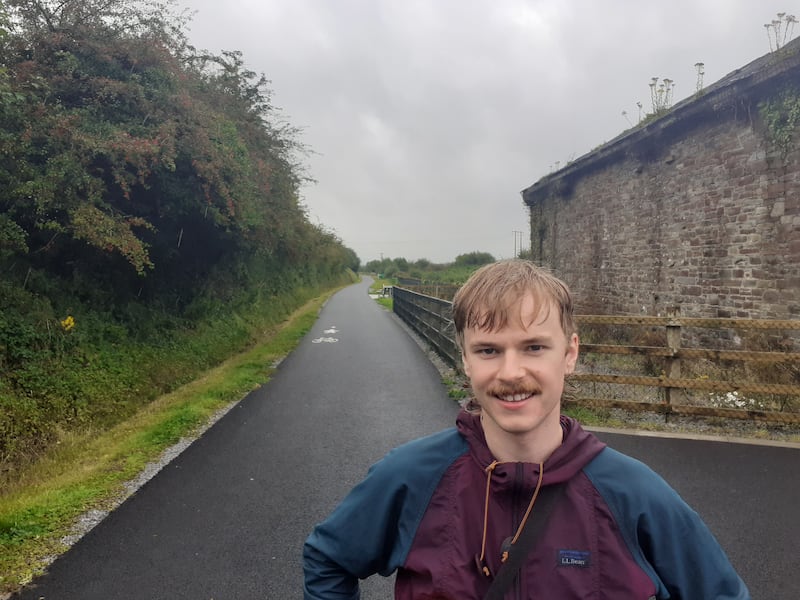
She has a reason to talk so highly of the greenway. Since it reopened, all sorts of activities and opportunities have sprung up around the route, and Sheehan was among the first to take advantage by setting up Barnagh Greenway Hub. It’s the most substantial stop along the greenway, she says.
READ MORE
The hub is also near the site of the famous Barnagh robbery of 1978, when armed men made off with £430,000 in cash from a cash transport van. The money was never recovered.
Atop the hill at Barnagh, which was formerly the highest point on Ireland’s railway until it closed the 1970s, Sheehan has set up mini golf, a playground, an ice-cream parlour and cafe with views of counties Limerick, Clare, Tipperary and Cork. One local insisted you can also see Waterford on a clear day (but I think he was fibbing).
When Sheehan opened her hub in 2021, the demand was “just phenomenal” as Covid restrictions pushed people outdoors, she says. It will be my stop for lunch later on, but for now I’m catching a greenway shuttle bus from Abbeyfeale to Rathkeale before I make the cycle back.
The bus driver, Mike Scanlon, worked in factories most his life. One of the manufacturing plants in Rathkeale, which made jewellery, employed 171 workers, who were all made redundant after it shut in 2013.
“I’m happy with what I’m doing now,” he says of his semi-retirement work. “I’m 58 years of age, I don’t think I’ll be a millionaire now, but that’s all right.”
With rain forecast, it will be a quiet day along the greenway today, he says. “When you have to put the wet gear on, no matter what you do you’ll still be drowned,” he adds with a chuckle.
Scanlon tells me all sorts of local stories on the way: who owns this and that, his excitement for his daughter’s upcoming wedding, and so on.
As few people use the bus service (€10 per adult, €5 per child), it is “losing money hand over fist”, he says, but insists it is a fantastic and much-needed service.
As I arrive in Rathkeale to begin my rural odyssey, I hop on one of the sturdy and lightweight rental bikes. As I pull off, I notice three women just leaving the greenway. Mary (72) from Drogheda, who doesn’t want to give her surname, is out walking with her sisters. She’s the eldest of the three.
“The greenway is very easy going,” she says. “We’ve done 20,000 steps already today. We like getting out into the country, off-road, just to walk.”
Along the way they came upon crab apples, dessert apples and blackberries. Her sister, Kathleen, who has visited most of Ireland’s greenways, adds that the Limerick Greenway is “particularly quiet” in comparison.
She’s right about the quiet. For city folk like me, meandering around farmland is almost therapeutic. Local dogs are out for a stroll with their owners. Every passing conversation naturally veers into the weather, GAA and back to the weather again.
Passing through Ardagh, near where the famed chalice was discovered in 1868, the old station house has been fully restored and there’s an impressive carving of the chalice into a tree stump.
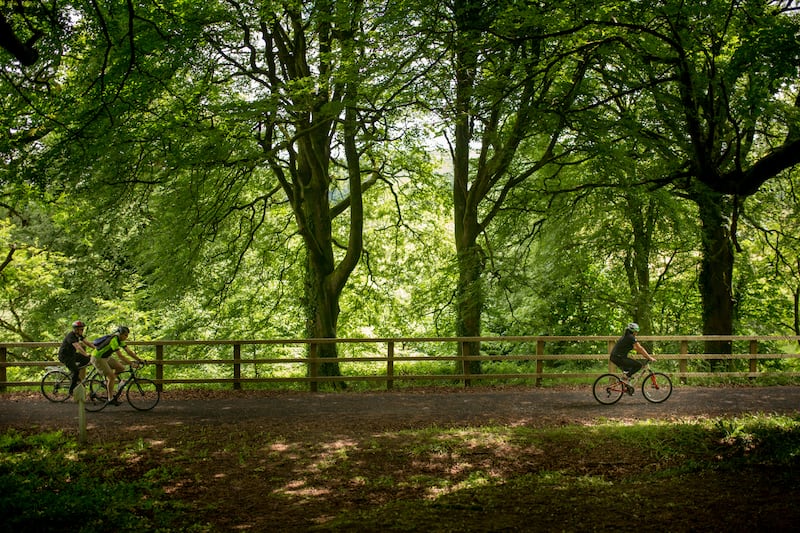
After another 4km I reach Newcastle West, marking the beginning of a 10km steady incline to Barnagh. The tarmacked surface is quite flat, and the whole greenway is fully wheelchair accessible. While the final stretch up to Barnagh is tough on the quads, it is worth it to cross Ferguson’s Viaduct, a cast-iron rail bridge, and the 115m-long Barnagh Tunnel. The lush greenery at the mouth of the tunnel will have you clambering for your camera.
Although the marketing material might have you believe the greenway is all native forest and exciting tunnels, most of the route, which snakes through farmland, lacks any notable landmarks.
Reaching the Barnagh Greenway Hub is a pleasant reward for the day’s activity and provides much-needed shelter from the incoming storm – there are no mini-golfers in sight today.
Two businesses rent on site, a bike rental shop and a pottery studio. Keri Sherlock, who runs the pottery studio, says the hub has been “a bloody godsend” for her.
“I don’t think there’s many pottery painting places in Ireland as there would be [abroad],” she says. “So I’m here to put it on the map.”
Although Sherlock is run off her feet on busy days, she feels the greenway is yet to be fully embraced by the community, two years after its reopening
She was born in Namibia, lived in England for several years, and now lives in Templeglantine, just down the road from Barnagh. “My whole family are from Limerick,” she says. “I’m the exotic one.”
“Barnagh [hub] is totally created for families,” she says. “There is a fantastic feeling around the place.”
She does pottery painting, pottery wheel classes and clay making – or “clay play” as she calls it. “Lady evenings” also prove popular, where budding potters can enjoy wine alongside their messy antics. “I suppose it’s a spin-off from paint and prosecco. So it’s not just for kids.”
Although Sherlock is run off her feet on busy days, she feels the greenway is yet to be fully embraced by the community, two years after its reopening.
“I don’t think everybody in the community has dawned on the opportunity,” she says. “If I was to draw a little graph, [the tourism in the area] is beginning to go up. But it’s only been two years ... You’ve got people now that aren’t just passing through, they’re also staying ... Everybody benefiting, even little artists like me. But this is the beginning.”
Leaving Sherlock’s pottery studio to cycle the last 13km back to Abbeyfeale, I fear I’m making a decision my mother would not approve of. “You’ll get pneumonia going out in that!” I hear her voice saying in my head. The storm is finally here. But after about two minutes of cycling, I’m about as wet as I’ll ever be. Accepting this fate, it is actually a lovely cycle.
I arrive drenched at Abbefeale Greenway Hub and leave my bike with a college student working there part-time. I’m the only cyclist he has seen for hours.
Back at Leens Hotel, I’m greeted by the familiar hook from Dancing in the Dark. Even when she’s away running errands, Sheehan makes sure Springsteen is looking after shop.
After drying myself off, I catch a taxi back to Limerick city. On the way, the taxi driver tells me he was one of the labourers who stripped the railway lines and sleepers from the old tracks back in the 1990s. A businessman sold off the materials to farmers in the area, who used them for barn frames.
It was tough work, he says, and worth it for the amenity they have in west Limerick today. Even if there’s a sense that the transformation is in its infancy.
Other great greenways
Great Western Greenway
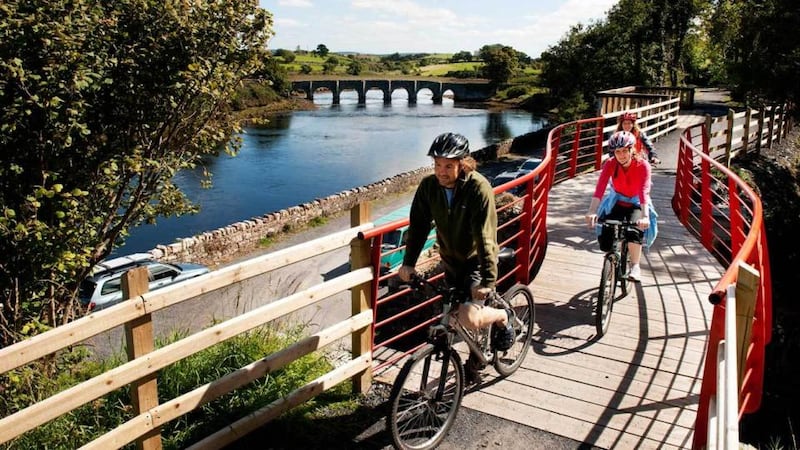
Ireland’s first official greenway opened in Co Mayo in 2010. It’s success had a domino effect, laying the foundations for successive projects such as the Limerick Greenway. It was a painstakingly slow process to convince 161 landowners to allow the greenway to pass across their land, but once it opened, people understood the vision. Stretching along a 44km route from Westport to Achill Island, it’s hard to find a more picturesque setting. The greenway is split into sections, such as Achill to Mulranny (13km), Mulranny to Newport (18km), which provides stunning views over Clew Bay, and Newport to Westport (11km).
Waterford Greenway
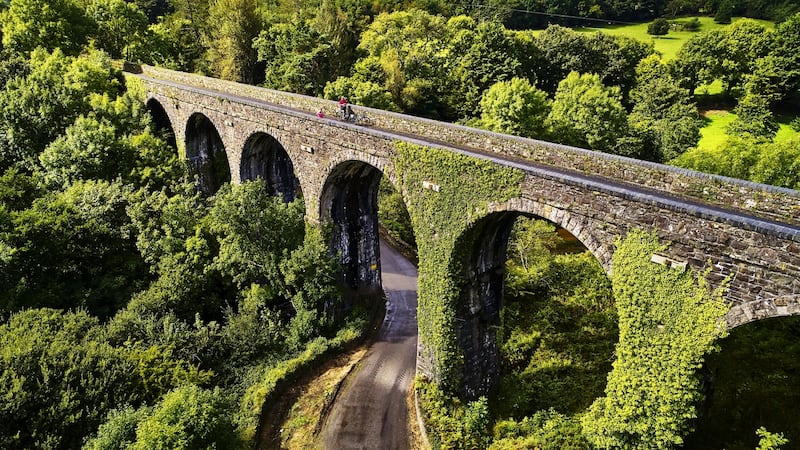
The Waterford Greenway hugs the coast along a stretch from Dungarvan to Shanacool, and the remainder straddles the countryside along the old Waterford-Dungarvan railway line. You can start your cycle at Grattan Quay in Waterford city, awarded Best Place to Live in Ireland by The Irish Times in 2021, and do as much of the 46km greenway as you like. From the Dungarvan end it starts at Walton Park. There are stops at the SETU Waterford campus (formerly WIT), Kiloternan, Kilmeaden, Kilmacthomas, Shanacool and Scartore. If you were to travel the whole greenway you would cross 11 bridges, three viaducts and pass through a 400m-long tunnel between the river Suir and Dungarvan Bay.
Royal Canal Greenway
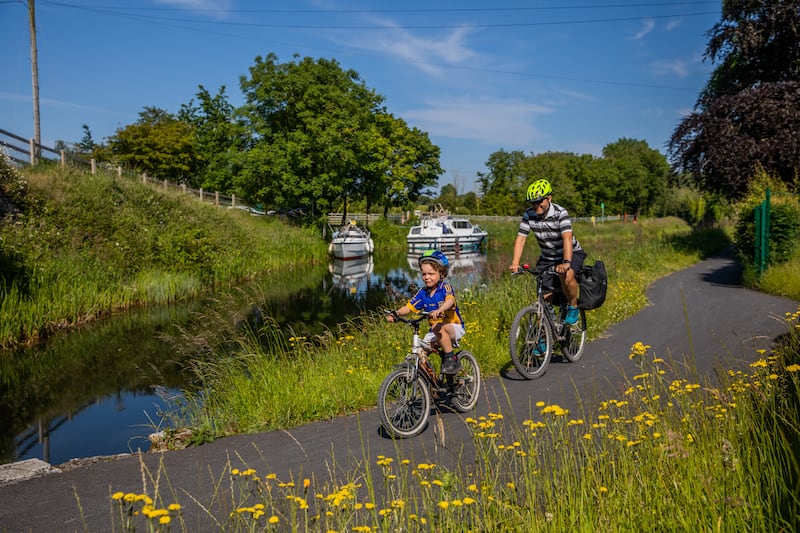
The longest of Ireland’s greenways, the 130km Royal Canal Greenway stretches along the waterway from Maynooth all the way to Longford. The slightly longer Royal Canal Way follows grassy towpaths, gravel and tarmac along the canal from Ashtown in Dublin to the village of Cloondara in Co Longford. All are good stomping grounds for a short stroll or a considered cycle. Passing through counties Kildare, Meath, Westmeath and Longford, the greenway also links up with the Old Rail Trail at Mullingar. Some sections are more developed than others, but each is generally flat with some off-shooting paths to explore along the way.
Old Rail Trail
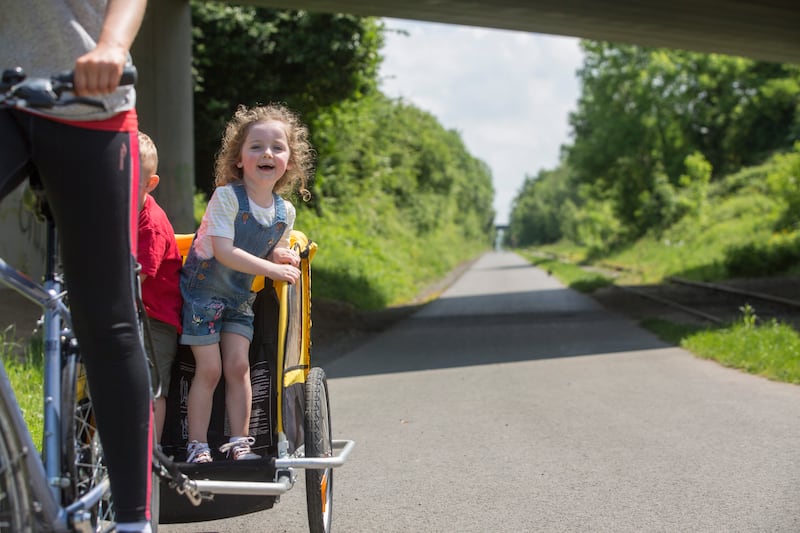
Along a 43km stretch of the Midlands Great Western Railway lies the Old Rail Trail, now a greenway fit for walking or cycling. The railway that once brought visitors to the towns of Athlone and Mullingar – the line closed in 1987 – now serves a new purpose as a cyclist’s stomping ground. There are three main stretches: Athlone to Moate (14.5km, mostly flat), Moate to Castletown (16.3km, flat with gentle slopes) and Castletown to Mullingar (11.4km, flat with gentle slopes). You can bring your own bikes or rent some in Mullingar.
Suir Blueway
The Suir Blueway opened in Co Tipperary in 2019 and runs across 53km from Carrick-on-Suir to Cahir. The first section between Carrick-on-Suir and Clonmel is a 21km walking or cycling trail, whereas the remaining 32km is mainly a waterway along the river Suir to Cahir (hence it’s known as a blueway). It offers a mix of bridges, castles and picturesque countryside along the route, and some river wildlife if you’re lucky. Many locals will insist there’s no better spot for walking than around Munster’s Golden Vale.



















